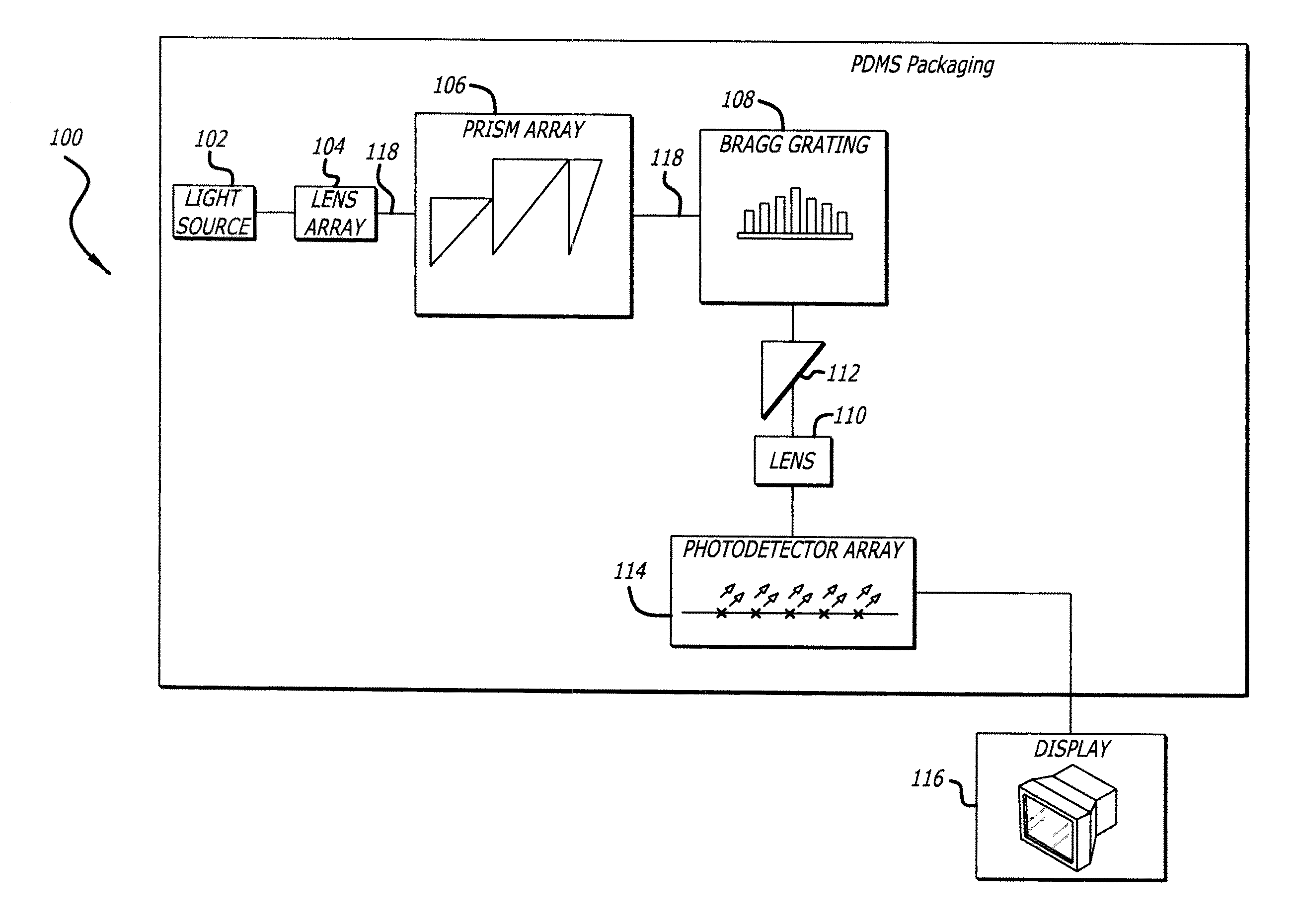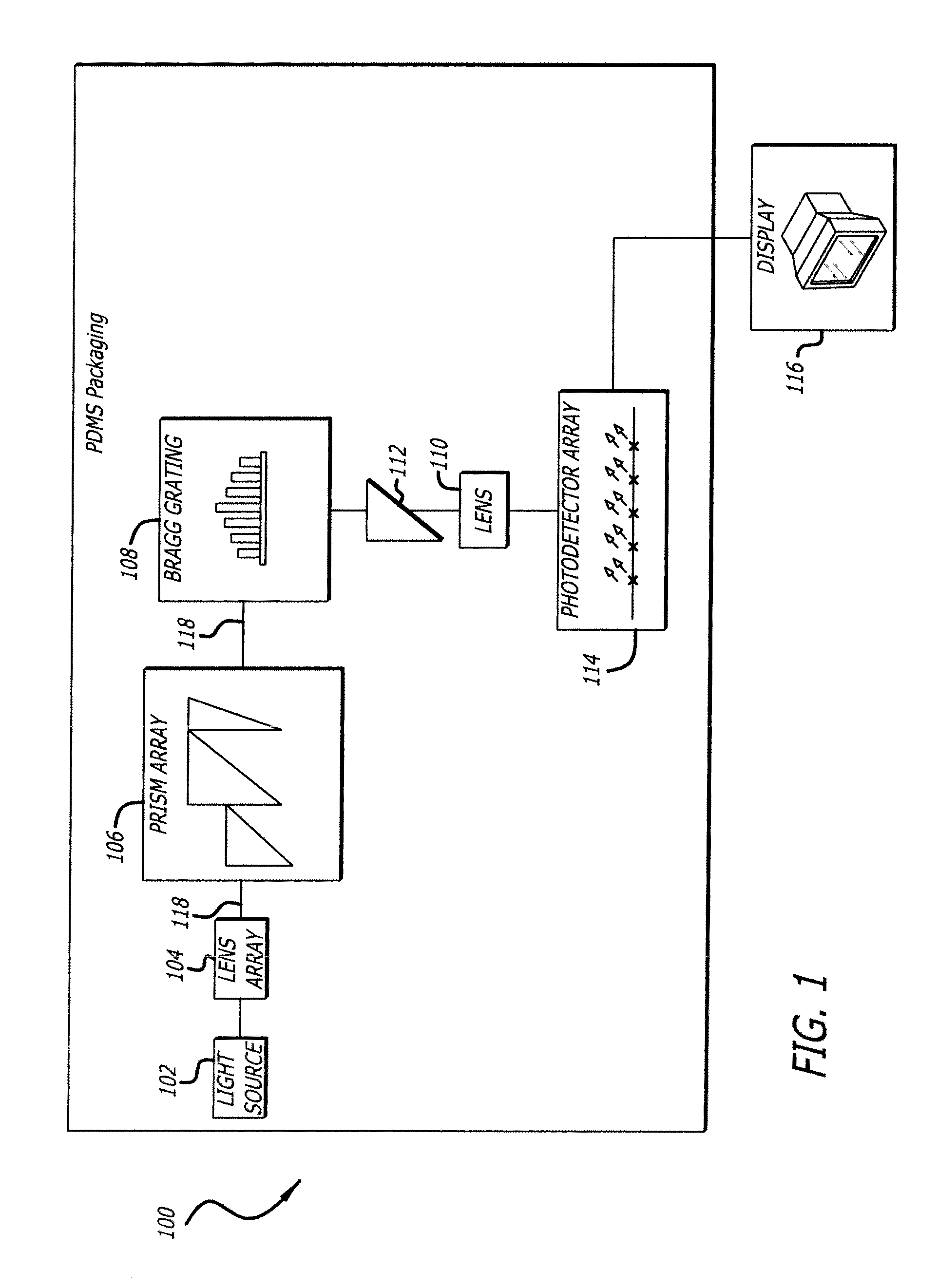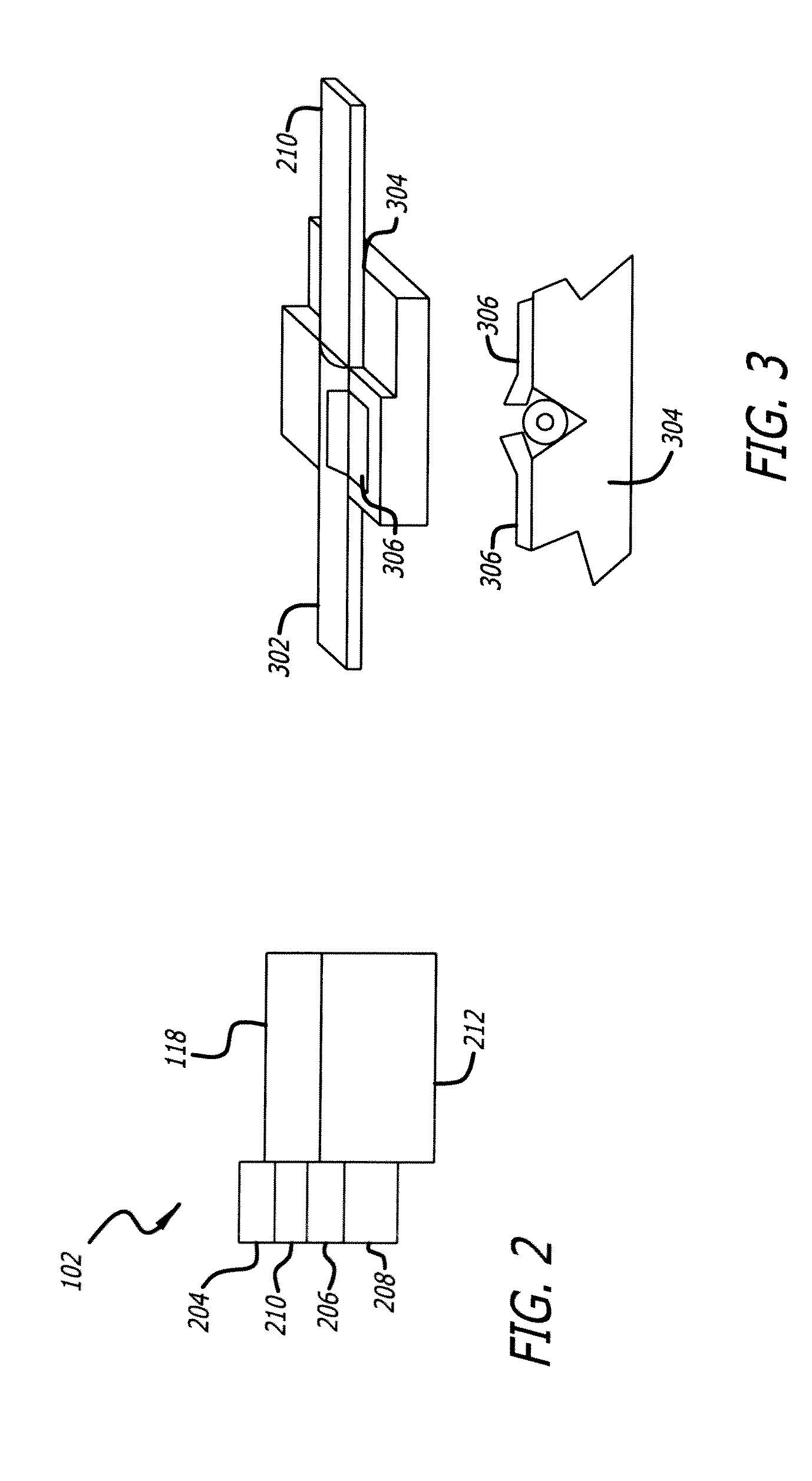Two dimensional optical scanning image system
a scanning image and two-dimensional technology, applied in the field of optical scanning, can solve the problems of adversely affecting the fineness of detail, the diameter of currently available flexible endoscopes cannot be reduced to smaller than the image size, and the trade-off between high image quality and small size, and achieve sensitive and accurate methods to capture high-resolution images. , the effect of reducing the associated drawbacks
- Summary
- Abstract
- Description
- Claims
- Application Information
AI Technical Summary
Benefits of technology
Problems solved by technology
Method used
Image
Examples
Embodiment Construction
[0049]FIG. 1 is a block diagram of an electro-optic scanner 100 according to an embodiment of the present invention. In the illustrated embodiment, the scanner 100 includes a light source 102 coupled to a lens array 104. The lens array 104 is coupled to a prism array 106, which is coupled to a Bragg grating 108. The Bragg grating 108 is optionally coupled to a prism 112, which is optionally coupled to a spherical lens 110. The Bragg grating 108 also may be coupled to a photodetector array 114 without going through the lens 110 and / or the prism 112. The photodetector array 114 is coupled to a display 116. Also in the illustrated embodiment, the light source 102, lens array 104, prism array 106, Bragg grating 108, lens 110, prism 112, and photodetector array 114 are packaged in a biocompatible material such as silicone rubber, dimethicone and / or polydimethylsiloxane (PDMS). Alternatively, the light source 102, lens array 104, prism array 106, Bragg grating 108, lens 110, prism 112, an...
PUM
 Login to View More
Login to View More Abstract
Description
Claims
Application Information
 Login to View More
Login to View More - R&D
- Intellectual Property
- Life Sciences
- Materials
- Tech Scout
- Unparalleled Data Quality
- Higher Quality Content
- 60% Fewer Hallucinations
Browse by: Latest US Patents, China's latest patents, Technical Efficacy Thesaurus, Application Domain, Technology Topic, Popular Technical Reports.
© 2025 PatSnap. All rights reserved.Legal|Privacy policy|Modern Slavery Act Transparency Statement|Sitemap|About US| Contact US: help@patsnap.com



